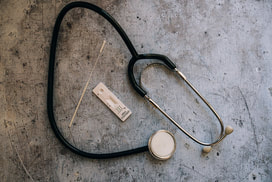 Ways Patient Education Improves Safety and Quality of Care Patients who participate in their own care are likely to have improved outcomes. Patient education is one way of facilitating self-management in patients with chronic diseases. Because patients often do not receive enough information about how their disease affects them, the information they know may be incomplete or inaccurate. For example, they may simply recall that diabetes causes excessive thirst; however, the main problem for type 2 diabetics is high blood glucose levels (hyperglycemia), which can damage organs and tissues throughout the body when it is not managed well over time. Patients need more than just recognition of these problems—they also need accurate guidance on how to control hyperglycemia through proper diet, medication use, exercising regularly, and other health maintenance activities. Patients tend to receive less information than they wish about their health, and yet they experience a discrepancy between what health care providers tell them and what they actually do. Patients tend to recall much more information than physicians think that patients know, but patients typically only remember about fifty percent of the information provided by physicians. Physicians may therefore underestimate how much patients can learn from brief patient education visits. Additionally, when patients fail to follow physician instructions during these short patient education sessions, physicians may conclude that such educational efforts are ineffective in promoting self-care or compliance with treatment regimens. Physicians should instead realize that manipulation of a treatment regimen for a single visit is not a reasonable basis for concluding a patient failed to understand it. Furthermore, discrepancies between what doctors say and what patients do can be reduced in short patient education sessions when the physician clearly explains the rationale for each instruction (i.e., why it is important). Patients are more likely to engage in health-promoting behaviors if they feel involved in decision making with physicians. These decisions may involve medical necessities versus options, cost versus benefit analyses of treatment plans, limitations on lifestyle choices (like diet or exercise), and other kinds of values-based choices that guide clinical decision making. Patient involvement does not predict how well people will follow care recommendations but does predict greater satisfaction with the type of information provided during patient education. Patients who feel involved in their care have better perceptions of communication with their providers, higher quality relationships with providers, perceive better quality of care, and are more satisfied with their medical visits. Patient involvement is related to perceptions about treatment effectiveness, understanding of health information, confidence in ability to manage one's health, participation in making decisions about one's own health care, trust in the competence of one's physician or other providers, accountability for choices made regarding treatment options, satisfaction with the relationship with providers (including how well providers listen), and willingness to seek additional help when needed. Physicians should try to elicit patient opinions before presenting an instruction plan rather than simply giving instructions that patients may perceive as insensitive or overly directive. The goals of patient education are usually developed by consensus between patients and healthcare professionals; however, differences exist between what doctors believe they want or need to tell patients and what patients actually want or need to learn. Studies of patient education suggest that people desire information about the following seven general topic areas: Patients can be taught about their condition by using written materials, pictures, demonstrations, group classes, or individual sessions with physicians. Most often, written materials are used for brief patient education episodes under ten minutes in length; however, they may also be useful for complex conditions requiring several hours of instruction over several visits. Patient education is sometimes compared to other methods of explaining health problems to patients (e.g., telemedicine), but it is not interchangeable with these approaches. During patient education interactions with doctors and nurses, patients should participate as much as possible—and doctors and nurses should encourage such participation. Patient education may be most effective when physicians establish a trusting relationship with patients before providing instruction. Patients can receive patient education either as an individual or by attending group sessions. When taught individually, the patient's concerns and expectations guide what information is conveyed; for example, older people tend to request information about medication side effects (possibly due to co-existing conditions), whereas younger people more frequently ask about the disease itself and how it is treated. More than 30 different types of health topics can be covered during short patient education sessions lasting ten minutes or less: these topics may include medications, medical tests and procedures, self-care issues (e.g., exercises), lifestyle changes that affect risk factors for certain medical conditions, and health care prevention practices. Patients can also receive patient education through group sessions led by professionals or other patients who have already received the same instruction. Patients should receive training in learning styles (e.g., auditory, visual, tactile) to help accommodate their preferred methods of receiving information. Group sessions are considered especially effective for teaching health-related behaviors that involve independent action on the part of patients (e.g., diet modifications). People attending group instruction may be more satisfied with what they learn than those receiving individualized instruction because group members can discuss concerns with each other; complementary questions even among different participants during presentations make it easier for presenters to cover all relevant material. Most people prefer short courses of only 1–2 hours in which they can see results of their learning immediately. Patients may learn more from patient education sessions when food, drinks, and distractions are prohibited or minimized. Pop-up windows with Internet links to educational materials have been found to contribute to patients' understanding of medical information discussed during patient education sessions. In a survey of doctors and nurses who had long experience providing patient education, the most important factors for a good outcome were thoughtfulness on the part of the practitioner (e.g., spending time building rapport before giving instruction), using relatively simple language (rather than "medical jargon"), and tailoring information to the individual's situation (e.g., consulting with him or her about lifestyle changes). Doctors and nurses should assess whether their teaching is successful when patient education ends. Patients who are taught certain skills that can be used in everyday life may have less need for visits with doctors in the future—especially when they are given general health information rather than specific instructions on how to address a particular medical condition (e.g., diabetes). However, some patients receiving patient education may want to make more frequent appointments with their physicians in order to discuss issues raised during these sessions. For people who already have chronic conditions, intensive training in self-care practices is required to produce changes that persist over time; such education needs to be continued long after each session of instruction or it will likely fail. To ensure that patients remember new knowledge and skills, short reminders of these should be provided by phone, e-mail, or postcard every 3–6 months after patient education. Mass media campaigns often provide instruction on screening tests for conditions with high prevalence. They raise awareness of the importance of health promotion activities and help people make decisions about cancer prevention or cardiovascular disease prevention strategies. However, it is difficult to ensure that those who actually need such testing take action because many do not recognize their personal risk factors for certain medical conditions (e.g., lack of regular physical activity). The effects of mass media campaigns on consumption of appropriate preventive services may be affected by characteristics such as race/ethnicity and socioeconomic status; thus, campaign messages should be tailored to specific target audiences in order to maximize their effectiveness. Patient education can be delivered via different media. For example, written materials are usually aimed at the general public and may be as simple as a brochure or as complex as a multivolume textbook. In some countries, primary care providers receive instruction from professional associations on how to provide patient education in settings such as nursing homes or outpatient clinics. A 2010 Cochrane review found that written materials were more effective than no intervention for preventing health problems among people with chronic conditions but not more effective than lectures although both were equally effective for improving physical function among the elderly. Patient education through audiovisual aids (e.g., video tapes) is considered particularly useful when training medical students who must learn diagnostic tests (e.g., mammography); however, it has not been shown to improve medical outcomes. Interactive CD-ROMs and DVDs that allow users to view material on their own schedules and learn at a pace that is appropriate for them may be useful for patient education and training, although they can also lead to many problems. For example, poor interface design (e.g., too much text with few visual aids) may result in people not learning the information as intended by the designers of the materials. In some settings, videoconferencing has been used as a means of providing patient education as well as consultations about medicine taking among international patients visiting Australia from other countries. Edwin Pritchard Eng, who coined the term "patient empowerment" in 1978, argued 25 years later that this term should be changed to "patient education" rather than empowerment because it is unlikely that people who lack the knowledge necessary to participate fully in their health care will become empowered as a result. Patient education can have negative effects on patient's health if the information provided is wrong, not enough or too much information. Negative effects of patient education can occur when a doctor gives a brief overview of a disease and its associated treatment without going into detail about the risks and benefits of each option. This may leave patients confused and unable make an informed decision about their treatment plans. If done properly however, patient education can improve communication between doctors and patients by providing accurate information as well as increasing awareness for preventative care techniques such as dieting and exercise regimes. The World Health Organization has identified several areas in which patient education and empowerment can improve populations' health: Patient empowerment is a term commonly used for describing the change of focus from passive treatment to active participation by patients. This usually means that patients need to take more responsibility for their own health, but it may also involve greater choice about different treatments (e.g., alternative medicine versus conventional medicine). In such cases, patient education forms an important part of the process because most people do not automatically know how to make informed decisions about their health care or resources they may use to help themselves. However, there is no consensus definition for this term; some definitions seem to include many elements of patient education while others may exclude these. Some definitions, for example, refer to patients having the authority to make decisions about their own health care without any reference to levels of literacy or education. In writing about empowerment and patient education in health care settings, the Indian authors Sivakumar Bose and Rajkumar Venkatesan wrote that empowering patients can be defined as a "process where a man in a dependent position is helped in such a way that he acquires power," also noting that it is necessary that the people being empowered have "the will" to change – otherwise they may become further marginalized from society. Patient empowerment became widely known when it was used by Bill Clinton during his 1992 presidential campaign under its initial name of Health Security Express. In fact, one of its developers, Professor Roderick MacFarquhar of Harvard University, was present on the platform with Clinton when he announced his idea and vision for a health care program. Patient empowerment is used in several different ways: By using patient education to empower people to take control of their lives, doctors can help patients achieve better health outcomes and reduce costs over time. A 2012 systematic review found strong evidence that educational interventions are effective at increasing patients' knowledge about cancer prevention practices with moderate evidence that these interventions are also beneficial for changing behavior. Another review published in 2009 found that patient education empowers people by helping them gain more control over how they manage their disease or condition. The authors noted, however, that there were gaps in the research regarding how best to help people manage self-care and that an important next step would be to conduct more research into this area. Some of the tools used by patients for empowerment include: Patient empowerment is said to occur when health care providers communicate with patients about their condition, treatment options, the expected results of the treatment plans, possible risks involved, and patient's desires. The goal of empowerment is for patients to make informed decisions about their own health care plan. These health care plans are based on shared decision making between the doctor and patient wherein both parties cooperate toward a single goal – optimal public wellness. Physicians are now less likely to use paternalism within their practice because empowering patients has been linked to improved clinical outcomes. This means that if the patient is not empowered, then they cannot get the desired results from a particular treatment plan and this leads to unnecessary costs in medical care. In order for patients to be able to make good decisions about their health, they need to have general knowledge of their condition or illness. For example, someone with arthritis will have an easier time making good choices about how to control their pain when they understand what causes it and what treatments are available. If the patient is given more information on which treatment options may produce better outcomes (such as lower risk of adverse reactions), then they can make educated choices between different forms of therapy (drug therapies versus surgical procedures). However, if the patient does not understand why one type of therapy would be better than the other, the treatment outcomes will be suboptimal. The extent of patient empowerment is largely dictated by the level of patient education prior to visiting the doctor's office. The concept of patient empowerment follows two interconnected principles: (1) people are more empowered when they have knowledge; and (2) people with knowledge make good decisions about their health care. If patients lack knowledge, they may not be able to make informed choices about self-care or comply with a treatment plan that could lead to improved wellness. For example, patients who do not understand how diabetes affects them or why they should monitor their blood sugar levels may not be as proactive about managing their illness as those who do have this information. In this case, both knowledge and empowerment are closely related. In fact, a study published in the Journal of Public Health found that patient empowerment helped patients lose weight more effectively than providing direct personal counseling on obesity-related issues (such as calorie intake or exercise). While other factors could have contributed to this result, one reason why the intervention worked well may be because it increased patient knowledge about how to reduce their risk of certain conditions linked to obesity. The idea of education is also important within the doctor-patient relationship. A doctor who provides information about treatment options can empower patients by giving them greater control over their health care decisions, which results in higher quality wellness outcomes due to better informed choices. For example, if an older adult with arthritis has the opportunity to learn about their condition and how it will progress overtime, they may make better decisions about joint replacement surgery in the future. When patients can make informed choices about their health care plan, they are more likely to follow through with treatment, which leads to better outcomes. This is true for both preventative treatments (such as cancer screenings) and treatments that restore health after an illness develops (such as chemotherapy after breast cancer). The World Health Organization's Commission on Social Determinants of Health has ranked empowerment among people toward highly effective solutions to social problems such as poverty or access to affordable healthcare. According to the commission, "progress requires collective action by national governments acting within international agreements". These agreements include economic policies geared toward fighting poverty at home and abroad. The commission has called for global policy changes in how economic development, public health management, labour issues and education are handled. The commission's call was echoed by the 2010 Pulitzer Prize-winning author ("The Spirit Catches You and You Fall Down"), who wrote that community empowerment is essential to curing major social ailments like poverty or even global conflicts. "I believe that when you empower people, they will act responsibly," she wrote, "and that when they act responsibly, solutions follow." Jilek also urged the need for further research into what makes certain efforts at empowering people successful while others fail. She concluded her article with a quote from her co-author on "The Spirit Catches You", Anne Fadiman: “When I ask myself what has made the biggest difference in my own life, I always come back to the same answer: other people.” Many medical education programs are beginning to focus on patient empowerment as well. Some evidence-based curricula aim to improve public health knowledge and self-care skills by involving patients actively in their healthcare decisions. Programs like these could help ensure that increasing numbers of patients make informed choices about how to manage their chronic conditions or protect themselves from illness through vaccinations or lifestyle changes (e.g., nutrition). Programs focused on empowering populations with resources for behavior change may be beneficial for improving overall wellness among high risk groups for certain diseases. A study published in the New England Journal of Medicine found that an intervention developed by researchers at Massachusetts General Hospital and Harvard Medical School to increase physical activity among Boston Marathon runners was effective. The intervention included personalized text messages sent on a daily basis as cues to encourage participants to meet their exercise goals for the day; those who received more overall encouragement were more likely to be physically active. When participants received feedback on their results, they felt better about their ability to change their lifestyle habits by exercising more often. This study's findings suggest that digital health interventions focused on empowering patient populations with specific skills might be promising in changing behaviors for chronic disease management—specifically, improved wellness outcomes from increased physical activity. In 2014, President Obama announced a "Patient-Centered Outcomes Research Institute" (PCORI) that aims to ensure that patient preferences are considered in all research conducted throughout the nation's healthcare system. PCORI was formed as an independent non-profit organization that aims to provide patients with the information they need to make more informed decisions, support research that can directly improve patient care, and help doctors and other health providers make well-informed treatment choices for their patients. Patient education is a method of communication between medical professionals and patients about biomedical information. It encompasses the process of informing patients about disease processes, diagnostic tests, treatments, preventive measures, or self care options. The goal of patient education is empowerment: empowering the individual by providing knowledge and tools to facilitate informed decision making; empowering communities by increasing public awareness; and empowering organizations like hospitals by improving quality of care within their institutions. Patient education is used in many settings; it can happen between a physician and patient, or among a group of patients who have been diagnosed with similar illnesses or conditions. It may occur during medical visits, community health outreach programs, conferences, or other places where people gather to learn about a specific condition. Some educational initiatives are designed for the general public so that individuals without a specific disease diagnosis receive information about how to prevent future illness or injury. In all populations, including those at-risk for disease development as well as those without risk factors knowledge of ways to increase wellness is important for optimal quality of life. In its broadest sense, patient education occurs any time someone learns from someone else: parents teach children, teachers teach students, friends share information with each other. Health-related patient education is the process of sharing knowledge about health and disease that encourages people to assume responsibility for their own health status. The following are learning theories that have been utilized in various aspects of patient education: behavior modification, cognitive development, constructivism, guided participation, kinesiology (the study of human movement), learning principles/styles examination, perceptual control theory (PCT), psychoanalysis, social learning theory (SLT), systems theory/cybernetics. Some of these theoretical approaches are incorporated into medical school curricula or training programs for educators to become more effective educators who can deliver the best possible instruction to patients. Other theories are used by organizations to design their educational initiatives. Most health professionals have training in biological sciences as well as education and communication skills. They also have content knowledge related to the disease processes or treatment regimens that they are expected to teach their patients. These qualifications give them a fundamental understanding of patient education theories and principles needed for effective teaching. In addition, educators with many years of clinical experience and advanced specialty training may possess advanced knowledge about diseases and how to treat them, which can make them even more effective educators. On the other hand, it is difficult for physicians to keep up with all of the latest scientific evidence regarding new therapies, targeted drug therapies, dietary changes, and lifestyle modifications because such information is rapidly evolving (and is quite costly). For this reason, most physicians consult with their colleagues to stay informed about what types of patient education may be most beneficial for different populations of patients. Physicians must also find ways to keep abreast of new advances that will affect the care they provide to their patients. The following is a review of several patient education topics, along with a section on how selected learning theories may apply to each topic. The list is not exhaustive; it represents only some examples from a vast array of topics related to health promotion and disease prevention. For more information about these clinical conditions or treatment regimens, click on their links for additional resources. Aspirin therapy has been shown in studies to reduce the risk of cardiovascular events such as myocardial infarction (heart attack) and ischemic stroke in people with known coronary artery disease, peripheral arterial disease (PAD), or cerebrovascular disease. A systematic review of randomized controlled trials (RCTs) about the clinical benefits of aspirin therapy in various patient populations verified that aspirin therapy reduced cardiovascular events; however, there was no clear evidence of whether aspirin reduced the risk for all-cause mortality, nonfatal myocardial infarction (heart attack), heart failure, or revascularization procedures. The authors also noted that RCTs evaluating aspirin therapy did not provide enough information to determine which groups may be at increased risk for harm from aspirin use. In addition, observational studies have reported an increase in gastrointestinal hemorrhage from low-dose aspirin therapy in patients with a history of peptic ulcer disease (PUD). The USPSTF and CDC recommend that clinicians should regularly update their patient education about aspirin use to provide information about risks and benefits based on new scientific evidence. The recommendations also suggest including information about aspirin use by age groups, such as older adults. In addition, it is recommended that clinical decision-making support tools (e.g., online calculators or guidelines) should be used to assist providers with prescribing decisions. Constructivist theory may apply to teaching patients about the personal risk factors for cardiovascular disease, whether they are at higher risk because of hypertension, diabetes mellitus, hyperlipidemia (high cholesterol), obesity/sedentary lifestyle, or smoking. This theory emphasizes that learning is a function of the assimilation of knowledge based on pre-existing cognitive structures, which are influenced by prior experiences and social contexts. In other words, individuals construct their own knowledge base from information they have obtained from their environment. Constructivist teaching methods for patient education about cardiovascular disease prevention may include asking open-ended questions about how patients feel when they learn new information to help them process the topic in a manner that fosters understanding and enhances motivation to change health behaviors. Constructivist theory also suggests that people actively seek out health information and incorporate it into what they already know or believe. Thus, this type of patient education may be more effective if its content matches individual patients' needs and concerns related to cardiovascular disease prevention. The Transcendental-Humanistic theory, which is based on the work of Carl Rogers and Abraham Maslow, may also prove useful when patient education about aspirin therapy is provided. This theory espouses that to be effective in helping patients learn about their health or make changes in their lifestyle to address a health concern, clinicians must understand the patient's concerns and develop an empathic relationship with them so they can provide support when needed. For example, to help patients who are at increased risk for cardiovascular events due to hypertension or diabetes mellitus, but lack motivation or skill to manage these disorders through lifestyle modifications (e.g., dietary changes), it may be helpful for clinicians to offer encouragement to help overcome obstacles created by these conditions. The Transcendental-Humanistic theory also suggests that clinicians should engage patients in health practices (e.g., patient education) by eliciting their participation and providing them with choices, rather than simply dictating practice options or what patients "should do." Based on the patient educational needs assessment results shown below, the following information may be provided to tailor patient education about aspirin efficacy and safety: This type of individualized intervention may serve as a model for future approaches to tailoring patient education about aspirin therapy to the broader population of adults age 50 years or older who are at increased risk for cardiovascular disease. However, more research is needed to determine whether tailoring aspirin information will benefit either patients' understanding of this medication or their willingness to use it. Patient education is an important aspect of patient care because providing patients with information about their disease or condition (e.g., prevention strategies, medications) not only helps them understand their health concerns but also makes them better partners in their own care by enabling them to actively participate in decisions about how best to manage these conditions. Patient education has the potential to influence multiple patient outcomes, such as reducing risk behaviors that lead to disease (e.g., smoking cessation); improving adherence with medical therapy; enhancing self-management skills; and promoting quality of life, health behavior change, and reduced anxiety levels. Many forms of patient education exist , including formal education provided by clinicians or other healthcare professionals during office visits or educational sessions held in other healthcare settings (e.g., hospitals, community clinics); independent patient education materials that patients or their caregivers can review on their own; and peer-to-peer health counseling services designed to help individuals manage their health. Patient education can be offered in various formats, including printed materials (e.g., brochures, pamphlets), audiovisual presentations (e.g., television programs, computer software), and electronic media (e.g., CDs). Finally, this intervention may occur in a variety of healthcare settings, including physicians' offices; outpatient clinics; hospitals; long-term care facilities (e.g., nursing homes); worksites; pharmacies; public health departments; schools; senior centers; other community locations (e.g., malls); and homes of patients or their caregivers. Specific patient education is a type of tailored patient education that is used to help individuals better understand medical information and make informed choices about health care management . It has the advantage of focusing on information that is most relevant, interesting, and important to patients (e.g., patient-centered learning). Patients who receive specific advice from providers about how to prevent disease or manage existing conditions are more likely to take positive steps toward improving their health status than those who receive general advice (e.g., "Eat right and exercise"). Background: Aspirin use can be divided into three periods: nonuse, unsafe use, and proper use. Many people have misconceptions regarding aspirin's safety, efficacy, and appropriate use. The following information may be provided to tailor patient education about aspirin efficacy and safety: This type of individualized intervention may serve as a model for future approaches to tailoring patient education about aspirin therapy to the broader population of adults age 50 years or older who are at increased risk for cardiovascular disease. However, more research is needed to determine whether tailoring aspirin information will benefit either patients' understanding of this medication or their willingness to use it. Patient education is an important aspect of patient care because providing patients with information about their disease or condition (e.g., prevention strategies, medications) not only helps them understand their health concerns but also makes them better partners in their own care by enabling them to actively participate in decisions about how best to manage these conditions. Patient education has the potential to influence multiple patient outcomes, such as reducing risk behaviors that lead to disease (e.g., smoking cessation); improving adherence with medical therapy; enhancing self-management skills; and promoting quality of life, health behavior change, and reduced anxiety levels. Many forms of patient education exist, including formal education provided by clinicians or other healthcare professionals during office visits or educational sessions held in other healthcare settings (e.g., hospitals, community clinics); independent patient education materials that patients or their caregivers can review on their own; and peer-to-peer health counseling services designed to help individuals manage their health. Patient education can be offered in various formats, including printed materials (e.g., brochures, pamphlets), audiovisual presentations (e.g., television programs, computer software), and electronic media (e.g., CDs). Finally, this intervention may occur in a variety of healthcare settings, including physicians' offices; outpatient clinics; hospitals; long-term care facilities (e.g., nursing homes); worksites; pharmacies; public health departments; schools; senior centers; other community locations (e.g., malls); and homes of patients or their caregivers. The following types of patient education are not meant to be exhaustive but rather illustrative: Specific patient education is a type of tailored patient education that is used to individuals better understand medical information and make informed choices about health care management . It has the advantage of focusing on information that is most relevant, interesting, and important to patients (e.g., patient-centered learning). Patients who receive specific advice from providers about how to prevent disease or manage existing conditions are more likely to take positive steps toward improving their health status than those who receive general advice (e.g., "Eat right and exercise"). This type of individualized intervention may serve as a model for future approaches to tailoring patient education about aspirin therapy to the broader population of adults age 50 years or older who are at increased risk for cardiovascular disease. However, more research is needed to determine whether tailoring aspirin information will benefit either patients' understanding of this medication or their willingness to use it. A broad range of educational methods can be used for patient education, including didactic learning (e.g., lectures), experiential learning (e.g., group discussion, hands-on practice), and self-management activities or skills training . Didactic learning generally refers to a technique in which an individual is provided with information in a lecture format. Experiential learning typically involves talking through coping strategies and/or practicing them within the context of a role play or other types of simulation exercise. Self-management activities include techniques that focus on building interpersonal skills such as communication and problem solving, enhancing self-efficacy by teaching patients how to successfully manage their chronic conditions, promoting skills such as goal setting and self-monitoring, and providing practice in the application of skills. Other examples of techniques for patient education include use of audiovisual materials (e.g., films), computer technology (e.g., Internet resources and CD-ROMs), and so-called "motivational interviewing" approaches to help motivate patients to adopt healthful behaviors. The type of educational method used is likely to depend on the audience, available resources, perceived barriers or preferences toward learning styles, amount of time allocated for an intervention session(s) with a patient, and the patient's prior experience with that specific type of educational method . For example, patients who are older may prefer more didactic methods or group sessions because they find it difficult to assimilate information presented in an experiential format. Patients with chronic conditions who receive more intensive treatment (e.g., frequent face-to-face contact) that includes increased use of patient education are more likely to comply with their treatments than those who receive less intense interventions . Other studies suggest that, even if educational intensity is the same, patients have better outcomes when they are actively involved in treatment decisions rather than being "passive recipients" of care . Patient involvement typically has been operationalized as staying informed about one's medical condition or treatment choices, taking positive steps toward disease management, and/or exerting control over healthcare decision making through active participation in care planning processes. Thus far, most available evidence suggests that patient education can help patients with chronic conditions gain greater control over and stronger commitment to their disease management. However, the role of patient involvement is not fully understood and requires more research. Patient expectations form the foundation for how they react to any situation within healthcare . Patients who feel that they lack control or influence over decisions concerning their treatment or care may experience feelings such as vulnerability, passivity, and overwhelming anxiety about medical decision making . Thus far, researchers have identified two types of roles individuals play when receiving health care: a "compliance" role (e.g., be informed, ask questions) and a "participation" role (e.g., understand what's going on, make choices). The literature suggests that patients are more likely to assume a compliance role when they feel their safety is threatened, whereas patients are more likely to assume a participation role when they feel an emotional bond with their providers . Unfortunately, the effect of patient education may depend on what type of role individuals apply in situations involving health care. The benefits of patient education are thought to outweigh the risks of participating in activities that provide information and help facilitate coping with chronic diseases. Patient education can also help improve communication between provider and patient, which can result in better healthcare teamwork . For example, shared decision making has been shown to decrease anxiety among patients by giving them appropriate control over treatment decisions without compromising quality of care. Some studies have even found that when using shared decision-making strategies, patient education resulted in fewer hospitalizations and physician visits . Researchers have found that patients who receive more information about their illness or treatment tend to feel better prepared for what will happen, which decreases the stress experienced during a medical episode . Although communication skills are central to good physician-patient interactions, there is evidence to suggest that many physicians may lack appropriate communication skills when talking with patients . A review of studies on clinical communication found that both patient and physician characteristics (e.g., age, gender) affect how well they communicate with each other during any given medical encounter. Moreover, because communication occurs along a continuum from nonverbal cues (e.g., vocal tone) to verbal content (e.g., words used), effective communication is likely to be influenced by a combination of these factors . Patient education can help patients cope with chronic diseases and prepare for future events. However, since patient education aims to improve the healthcare experience, it should not compromise either safety or quality of care. The following seems like good advice: "patient education needs must be balanced against the potential risks and benefits—for both patients and providers—in order to optimize outcomes ." More research is needed before researchers fully understand how patient education affects those participating in medical situations.
0 Comments
In this time of economic downturn, one area that hospitals and medical practices need to work on is their patients' satisfaction. The internet has made it easier for people to communicate with each other and share information about a company or service. When a patient gets a satisfactory experience from a doctor's office or hospital, they are more likely to tell others about the good experience. On the opposite side of the spectrum, when someone has been dissatisfied with their service from a business or medical practice, then they are much more willing to express that fact all over social media sites such as Facebook and Twitter. In this article I will discuss ways in which satisfaction levels can be improved by offering better customer service through various methods including: hiring warm staff members who genuinely care about their patients, ensuring a clean environment, and having a clear understanding of patient expectations.
The first step to improving the satisfaction levels for your medical practice or hospital is to hire staff members who genuinely care about their patients. A study done by Danette Howard at Florida State University revealed that nurses with positive personalities are more likely to improve patient satisfaction than those showing negative attitudes . It shows that staff members who treat every person they meet as an individual are better suited for providing customer service than someone exhibiting negative behavior. Another survey done by All-About-Vision.com found that over 60% of people do not like dealing with eyeglass salespeople because they act pushy and give "attitude" . The same can be said for doctors and medical staff members in a hospital. When patients walk into a room or to an appointment, they become nervous about what is going to happen and whether someone will be kind enough to help them understand their options. In addition, employees should have clean appearances when they are making rounds or meeting with patients. If a patient walks into an office and the staff members look disheveled and exhausted, then the initial impression may not set up for a positive experience during their visit. A study conducted by Ann Marie Fiore from West Virginia University showed that hospital visitors found people in sterile uniforms more trustworthy than those wearing casual attire . In other words, if your staff members wear scrubs or lab coats when they meet with patients, then patients will feel that they are being treated with greater care and attention. Hiring staff members who are warm, caring individuals along with employees that have a positive appearance will help improve the satisfaction levels for your medical practice or hospital. The next aspect of customer service to consider is how clean your facility is kept. People want to go into an office or room knowing it will be perfectly neat and orderly . If there are papers scattered on desks, trash on the floor, stains on the chairs, and other elements that make the room look unclean then patients are not going to feel comfortable during their appointment or stay in that room. Let's think back to when you were in school as a child : wouldn't you want your classroom to look perfect before having visitors come inside? The same idea applies when people are in a doctor's office or hospital room. Another element to consider is the patient expectation factor. In other words, you need to have an outline of what the patient expects from your staff members and how their time will be spent while they are visiting with your company . If there is no clear understanding about what type of service a person can expect, then it will create tension between both parties resulting in negative feelings about the entire experience. For example, Dr. Goodson from Yankton Animal Clinic in South Dakota states that " When clients come for a wellness exam or appointment, we don't have any veterinary business assistants working here yet, so I do all the check-in myself right away" (Bauer). If you are reading this article in the doctor's office waiting room, then you can see how important it is to have a desk set up with someone who is ready and able to discuss any questions or concerns that will come up. On the other hand, if a patient walks into an office and there is no one available to help them, they may feel as though their time was wasted by just sitting down and waiting . In order for medical practices and hospitals to increase satisfaction among their customers, they need to hire staff members who will create a clean environment and understand what patients expect from their visits. The final step of improving the customer service experience is making sure that your staff members follow through on everything they say. When working at a hospital or medical office, sometimes people are panicked or can become confused very easily. Your job is to make sure that your staff members are able to take control of the situation so patients feel safe and comfortable at all times . For example, if a patient comes in for surgery, then they want to know exactly what is going to happen so there are no surprises later on. If you have an employee who has worked at your hospital or practice for several years , ask them if they remember any questions that were brought up when people were preparing for surgery. This way you know whether employees have been listening properly during conversations with patients and trying their best to answer everyone's questions thoroughly . Another tip that may be helpful is saying "I will do my best to find out the answer to your question and get back to you soon." This shows that your staff member is willing to help in any way possible while at the same time giving them a deadline for when they will respond . The last thing we need to do in order to improve customer service satisfaction is constantly observing your employees and making sure they are following through with their actions. If you see an employee constantly having issues with this, then make sure you sit down and talk about it with them directly. As a result of the 2021 Consolidated Appropriations Act, several No Surprises Billing Act regulations will go into effect on Jan. 1, 2022 for providers, facilities and air ambulance services. The No Surprises Billing Act regulations came into play to protect patients from surprise medical bills. These regulations will affect providers, facilities, and air ambulance services that receive payment from a commercial insurer for providing emergency or non-emergency care to a beneficiary in a health care emergency situation. Providers must comply with the regulations if they want to continue working under these insurance plans. Providers, facilities, and air ambulance operators can avoid falling out of compliance by getting their billing processes ready before Jan. 1, 2022. Here is what you need to know about the 2021 Consolidated Appropriations Act: What are "No Surprises" claims? The term "No Surprises Billing" has been around for more than 20 years, but the full act was passed in 2021. This act requires providers to disclose medical billing information to patients prior to rendering services if they receive payment from commercial insurers for providing emergency or non-emergency care. Providers must inform patients about out-of-pocket costs and may not balance bill them for covered charges after receiving payment from insurance companies. Covered entities include: Health care providers (physicians, hospitals, imaging centers, therapists) Laboratories Air ambulance services (ground or air) What types of claims are affected by the Act? The regulations affect all "No Surprises" claims—including claims for emergency medical care, inpatient hospital admission, and outpatient treatments. However, non-covered medical expenses like cosmetic surgery or dental work are not affected by the regulations. What is considered an "emergency" under the regulations? The regulations protect patients receiving emergency medical care, including surgeries and treatment for acute episodes of illness/injury which pose a threat to life or limb. Emergency medical care may also include transportation to the hospital if it is recommended by EMTs. Patients will be protected from any out-of-network charges exceeding $1,000 incurred during actual emergency services only (to include EMS services). It does not apply to non-covered services like cosmetic surgery or dental work. What billing statements need to be sent before Jan. 1, 2022? Providers can avoid falling out of compliance by sending one of three disclosures prior to rendering services: An advance written notice that informs patients of potential out-of-pocket costs and discloses all the providers who will participate in their care. The notice must include a list of all other providers involved in patient's care, an estimated dollar amount for each non-covered service and the dollar amount the patient will be responsible to pay for each provider. Providers can describe these amounts as "your estimated responsibility" if they don't have exact figures at the time of the disclosure, but it must include a disclaimer statement if no actual estimate is available. A separate written notice informing patients that they may be liable for more than $1,000 if insurance does not cover any or part of their medical bill that needs to be provided before services are rendered. The patient cannot be billed until the total cost has been disclosed to them. Providers must inform patients of their right to refuse services if they anticipate an out-of-network provider will be involved in care and that a bill may result from non-covered providers. In this case, the patient is no longer protected under the No Surprises Act for any charges incurred above $1,000 as a result of non-covered services from those providers. Patients must also receive a final written estimate from every participating provider before being transferred or discharged from a facility/hospital to have "reasonable assurance" all fees have been disclosed prior to rendering services, according to CMS guidelines . What can happen if you don't comply with these regulations? State agencies overseeing licensure can assess penalties of $1,000 for the first offense and up to $10,000 per subsequent infraction. Civil money penalties of $5,000 or up to $50,000 per incident may be assessed against individual physicians and other practitioners who violate the patient disclosure requirements. Physicians found to abuse their patients rights under this Act could face disciplinary action from state medical boards. What's the bottom line? CMS estimates that 56 million consumers receive surprise medical bills each year. The No Surprises Act is intended to ease some of these financial burdens by requiring all providers—including hospitals and out-of-network doctors—to provide upfront billing information about potential charges so patients aren't in a position where they must make difficult choices between paying for lifesaving treatments or putting food on the table. The No Surprises Act was signed into law in December 2016 and takes effect January 1, 2022. These regulations ease some of the burden that surprise medical bills place on patients when they receive care from non-contracted providers like ER doctors or specialists who don't accept insurance—even when the services are viewed as emergencies by insurers. Under these new regulations, patients will be protected under what's known as "surprise billing" protections for covered medical expenses like emergency procedures performed at in-network hospitals or ambulances operated by contracted transportation companies. The No Surprises Act also requires that physicians disclose all participating providers before rendering any service in an effort to allow patients to make informed decisions about their clinical needs or insurance coverage. At this time, CMS does not consider CT scans to fall under these regulations unless performed in an emergency. No surprise it's a tough time to be working in health care... CMS Issues Proposed Rule for No-Surprises Billing Protections -- While many of the changes are good news, other aspects are frustrating both providers and patients. Patients will be protected under what's known as "surprise billing" protections for covered medical expenses like emergency procedures performed at in-network hospitals or ambulances operated by contracted transportation companies. The No Surprises Act also requires that physicians disclose all participating providers before rendering any service in an effort to allow patients to make informed decisions about their clinical needs or insurance coverage. At this time, CMS does not consider CT scans to fall under these regulations unless performed in an emergency. CMS Issues Proposed Rule for No-Surprises Billing Protections -- While many of the changes are good news, other aspects are frustrating both providers and patients. Under these new regulations, patients will be protected under what's known as "surprise billing" protections for covered medical expenses like emergency procedures performed at in-network hospitals or ambulances operated by contracted transportation companies. The No Surprises Act also requires that physicians disclose all participating providers before rendering any service in an effort to allow patients to make informed decisions about their clinical needs or insurance coverage. At this time, CMS does not consider CT scans to fall under these regulations unless performed in an emergency." And to make it even better, the "No Surprises" Act takes effect January 1st... Although not entirely unexpected (the No Surprises Billing Act was part of the 2016 Consolidated Appropriations Act), CMS has proposed regulations that go into effect Jan. 1, 2022 that provide protections for insured patients who receive care from out-of-network physicians and other providers involved in surprise billing practices. The American College of Emergency Physicians (ACEP) issued a statement saying it is pleased with these rules as they recognize emergency care as necessary medical care requiring treatment by any physician willing to render such service. ACEP also said it continues to review specific provisions within CMS's proposed rule and will submit detailed comments pointing out language that needs clarification or revising. CMS has proposed that physicians and hospitals must: - provide written notice to patients of the right to receive emergency services from an out-of-network provider without balance billing, and must disclose all providers within the same hospital system who will be involved in a patient's care; - if they do not have direct access to this information, inform them of their right to receive such written notice directly from any physician or other health care provider rendering such services as long as such notice is provided before receiving medical treatment; and - make reasonable efforts to arrange emergency services with an out-of-network provider who will agree, prior to providing such service, either: (i) accept the insurer's negotiated rate as payment in full for such emergency services; or (ii) to bill the patient for any balance above the insurer's payment. The American College of Emergency Physicians (ACEP) issued a statement saying it is pleased with these rules as they recognize emergency care as necessary medical care requiring treatment by any physician willing to render such service. ACEP also said it continues to review specific provisions within CMS's proposed rule and will submit detailed comments pointing out language that needs clarification or revising. CMS Issues Proposed Rule for No-Surprises Billing Protections -- While many of the changes are good news, other aspects are frustrating both providers and patients. Ms. Campanella is a nationally respected Healthcare Attorney who dedicates herself to educating professionals on issues of business transactions and regulatory compliance. She focuses her practice on business law, health care regulatory and transactional matters, and residential and commercial real estate. She has extensive experience assisting clients with transactional services and regulatory compliance consulting and has provided general counsel services to small and large businesses, medical practices, professional societies and real estate clients alike. Certifications HIPAA Academy Certified HIPAA Administrator Fellow, American College of Healthcare Executives This Webinar will provide you more clarity about the topic on "No Surprises Act". The No Surprises Act protects patients covered under group and individual health plans from receiving surprise medical bills when they receive most emergency services, non-emergency services from out-of-network providers at in-network facilities. Since it took effect on January 1, 2022, we have been getting so many calls from our clients and other source referrals asking how they can comply with this new rule. And how the "No Surprises Act" impacts medical practice offices and ASC Ambulatory Surgery Centers settings. In this Free Webinar, our speaker who is a Healthcare Attorney will thoroughly explain the most important topics related to this new rule: (1) Understanding the "No Surprises Act"; (2) Why Billing at of out-of-network rates can be difficult and what you need to do to stay compliant with the new rule; (3) How providers are required to give the patients a "good faith estimates" of the cost of the services provided to uninsured and self-pay patients in advance or prior to the patient's appointment; (4) No "balance-billing" allowed for out-of-network emergency care until the patient gave consent and safely moved to an in-network facility; (5) No "balance-billing" allowed for patients that are on-scheduled out-of-network services when the facility is considered as in-network facility unless the patient has been notified and provided consent; (6) How your office and your surgery center can comply with this new rule by implementing a new operational workflow and proper training of your staff; (7) How your patients will have the best patients’ experience. This Webinar will surely answer so many of your questions and uncertainties. The truth is, we have no choice, it is here now! And it took effect on January 1, 2022. And we have to comply with this new rule. We have to implement this in our practice offices and in ambulatory surgery centers. Ms Gina Campanelli is a Healthcare Attorney, there is no better person to help us understand and comply this new rule. See you all (virtually) to our upcoming webinar! Remember this is FREE, seats are limited! So REGISTER TODAY! Question about this Event? Call us (the Organizer) at (800) 267-8752 or visit us online at www.gohealthcarellc.com and drop us a line! These are Modifiers you use during Post-Surgery!How to use the Global Surgery Modifier 24 Unrelated Evaluation and Management Service by the Same Physician or Other Qualified Health Care Professional During a Postoperative Period: The physician may need to indicate that an evaluation and management service was performed during a postoperative period for a reason(s) unrelated to the original procedure. This circumstance may be reported by adding the modifier 24 to the appropriate level of E/M service. How to use the Global Surgery Modifier 25 Significant, Separately Identifiable Evaluation and Management Service by the Same Physician or Other Qualified Health Care Professional on the Same Day of the Procedure or Other Service: It may be necessary to indicate that on the day a procedure or service identified by a CPT code was performed, the patient’s condition required a significant, separately identifiable E/M service above and beyond the other service provided or be beyond the usual preoperative and postoperative care associated with the procedure that was performed. A significant, separately identifiable E/M service is defined or substantiated by documentation that satisfies the relevant criteria for the respective E/M service to be reported (see Evaluation and Management Services Guidelines for instructions on determining level of E/M service). The E/M service may be prompted by the symptom or condition for which the procedure and/or service was provided. As such, different diagnoses are not required for reporting of the E/M services on the same date. This circumstance may be reported by adding modifier 25 to the appropriate level of E/M service. Note: This modifier is not used to report an E/M service that resulted in a decision to perform major surgery. See modifier 57. For significant, separately identifiable non-E/M services, see modifier 59. The E/M service may be prompted by the symptom or condition for which the procedure and/or service was provided. As such, different diagnoses are not required for reporting of the E/M services on the same date. This circumstance may be reported by adding modifier 25 to the appropriate level of E/M service. How to use the Global Surgery Modifier 54 Surgical Care Only: When one physician performs a surgical procedure and another provides preoperative and/or postoperative management, surgical services may be identified by adding the modifier 54 to the usual procedure code. Services billed with a 54 modifier will be reimbursed at the intraoperative allowance for the surgical procedure. The intraoperative allowance includes the one day preoperative care, the intraoperative service, as well as any in-hospital visits that are performed. How to use the Global Surgery Modifier 55 Postoperative Management Only: When one physician performs the postoperative management and another physician has performed the surgical procedure, the postoperative component may be identified by adding the modifier 55 to the usual procedure number. How to use the Global Surgery Modifier 57 Decision for Surgery: An evaluation and management service that resulted in the initial decision to perform the surgery may be identified by adding modifier 57 to the appropriate level of E/M service. How to use the Global Surgery Modifier 58 Staged or Related Procedure or Service by the Same Physician or Other Qualified Health Care Professional During the Postoperative Period: It may be necessary to indicate that the performance of a procedure or service during the postoperative period was (a) planned or anticipated (staged); (b) more extensive than the original procedure; or (c) for therapy following a surgical procedure. This circumstance may be reported by adding the modifier 58 to the staged or related procedure. Note: For treatment of a problem that required a return to the operating or procedure room (e.g., unanticipated clinical condition), see modifier 78 (below) How to use the Global Surgery Modifier 78 Unplanned Return to the Operating/Procedure Room by the Same Physician or Other Qualified Health Care Professional Following Initial Procedure for a Related Procedure During the Postoperative Period: It may be necessary to indicate that another procedure was performed during the postoperative period of the initial procedure (unplanned procedure following initial procedure). When this procedure is related to the first and requires the use of an operating room, it may be reported by adding modifier 78 to the related procedure. (For repeat procedures, see modifier 76). How to use the Global Surgery Modifier 79 Unrelated Procedure by the Same Physician or Other Qualified Health Care Professional During the Postoperative Period: The physician may need to indicate that the performance of a procedure or service during the postoperative period was unrelated to the original procedure. This circumstance may be reported by using the modifier 79. (For repeat procedures on the same day, see modifier 76). When one physician performs the postoperative management and another physician has performed the surgical procedure, the postoperative component may be identified by adding the modifier 55 to the usual procedure number. AMERICAN ACADEMY OF PAIN MEDICINE 38TH ANNUAL MEETING will be held in Scottsdale, AZ ! Check out their website for more information on Registration, the Venue and Sponsorship at AAPM American Academy of Pain Medicine 38th Annual Meeting 2022. CLICK HERE. As a company, we have grown and been around in the medical industry for nearly 22 years. And 98% of our clients are Pain Physicians, focusing in Interventional Pain Management Procedures. (Anesthesiologists, Neurologists and Physiatrists). We are mostly hired for Utilization Management, Medical Coding and as Compliance, Documentation & Reimbursement Audit Consultants. It is very common that most pain physicians' dilemma are why there is always a struggle in their claims getting paid appropriately (worse getting denied for non-payment) and their prior authorization are always being denied for non-medical necessity. They are trying to understand the why(s)? See, as a Medical Practice Healthcare Consultant myself, I have always advised Providers, they must understand clinical and reimbursement guidelines. And in this blog I am going to share with you reading resource called "Safety Practices for Interventional Pain Procedures" so you can relate on every insurance payers out there including Medicare with their Clinical, Billing and Reimbursement guidelines. All the PDF reading & learning materials here are owned by SPINE INTERVENTION SOCIETY. I truly find these materials (SAFETY PRACTICES FOR INTERVENTIONAL PAIN PROCEDURES) very useful when we are working on utilization management cases. We are not physicians, most of us are non-practicing nurses but it is very critical for us that we do understand what our Pain Physicians performing in terms of their procedures. Our team are using these materials for more understanding of these procedures and I always share it to all my Pain Physicians clients. I also recommend to them to check SAFETY PRACTICES FOR INTERVENTIONAL PAIN PROCEDURES PDF files are shown below downloaded from Spine Intervention Society public domain. You can visit their organization today!
If you are a Medical Practice, Facility or a Pain Physician struggling in getting your procedures approved for Prior Authorization, contact us today! We have 98% approval rate every time we pursue the case! We can make you very, very busy with your procedures! Or if your reimbursement is slow and not appropriate or worse not getting paid at all, you might have issues with your coding and billing. Contact us, we can guarantee you we can help either you are Out of Network or In-Network. We can also help you with injury cases (Motor Vehicle Accidents & Workers Compensation). ASC or Ambulatory Surgical Center billing and coding? we got that covered for you too! So smile! contact us TODAY! Don't take our word for it.... READ REAL TESTIMONIALS HERE Yes! we were there as one of its Sponsors at the New York & New Jersey Pain Medicine Symposium 2021!
Are the above questions also common to you and you don't know what's the best answer for these questions? We had a great time meeting with all our current Pain Practice clients and providers and have met several more potential clients that we can mostly provide value! I was invited again to speak at the Obesity Medicine Association on Medical Billing and Coding for Obesity Medicine Services. That moment after your presentation at a Medical Event ... the flash of lights is simply amazing when you know you have brought in so much value and you commit yourself to continue becoming more and working more so you can serve more! I am always grateful for the speaking opportunity! Thank you for having me as an invited Speaker! OMA Obesity Medicine Association #OMA2021 From my Facebook Post: "I am honored to be invited to speak at the Obesity Medicine Fall Event again! This time will be at the Grand Sheraton in Chicago! It’s good to be back, the last time I was invited to speak here was in 2018 in Seattle, Washington State. This is a very good exposure for my company with approximately 600 Physicians in my audience plus an hour of Q&A plus another breakfast session will be amazing! I am very excited for the opportunity! https://obesitymedicine.org/fall/plan/" #obesitymedicine #obesitymedicinefallevent2021 In my Tweet: Finally on the OMA App .. I will be speaking at the Obesity Medicine Association on September 24, 2021 at the Sheraton Grand Chicago Hotel! It’s good to be back at this event as an Invited Speaker! #obesitymedicine #speaker #leadership |
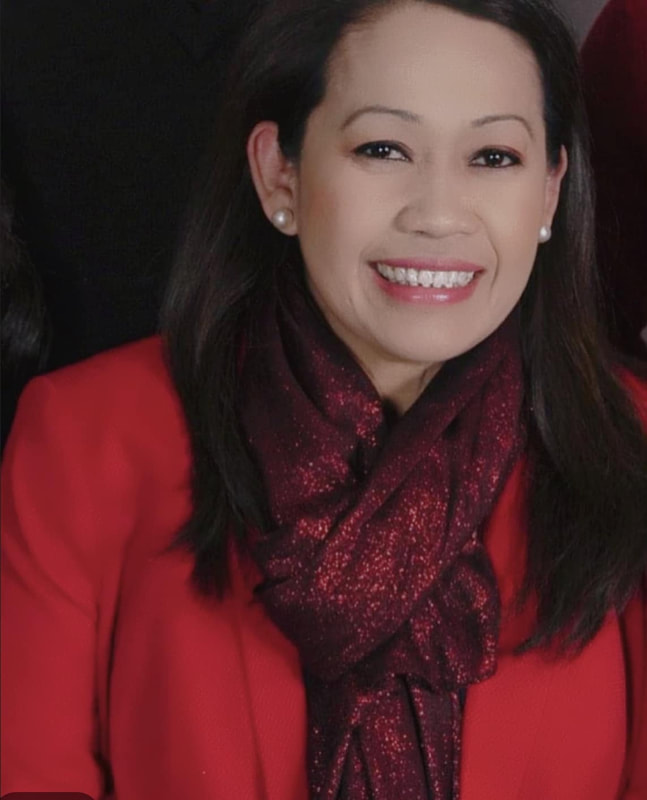
ABOUT THE AUTHOR:
Ms. Pinky Maniri-Pescasio is the Founder of GoHealthcare Consulting. She is a National Speaker on Practice Reimbursement and a Physician Advocate. She has served the Medical Practice Industry for more than 25 years as a Professional Medical Practice Consultant. search hereArchives
July 2024
Categories
All
BROWSE HERE
All
|
||||||||||||||||||||||||||||||||||||||||||||||||||||||||||||||||||
- About
- Leadership
- Contact Us
- Testimonials
- READ OUR BLOG
-
Let's Meet in Person
- 2023 ORTHOPEDIC VALUE BASED CARE CONFERENCE
- 2023 AAOS Annual Meeting of the American Academy of Orthopaedic Surgeons
- 2023 ASIPP 25th Annual Meeting of the American Society of Interventional Pain Management
- 2023 Becker's 20th Annual Spine, Orthopedic & Pain Management-Driven ASC Conference
- 2023 FSIPP Annual Conference by FSIPP FSPMR Florida Society Of Interventional Pain Physicians
- 2023 New York and New Jersey Pain Medicine Symposium
- Frequently Asked Questions and Answers - GoHealthcare Practice Solutions
- Readers Questions
Photos from shixart1985 (CC BY 2.0), www.ilmicrofono.it, shixart1985


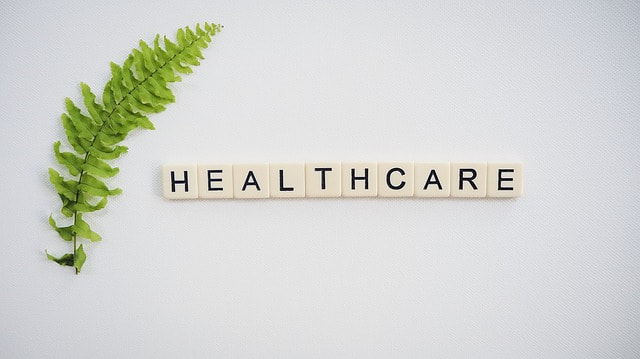
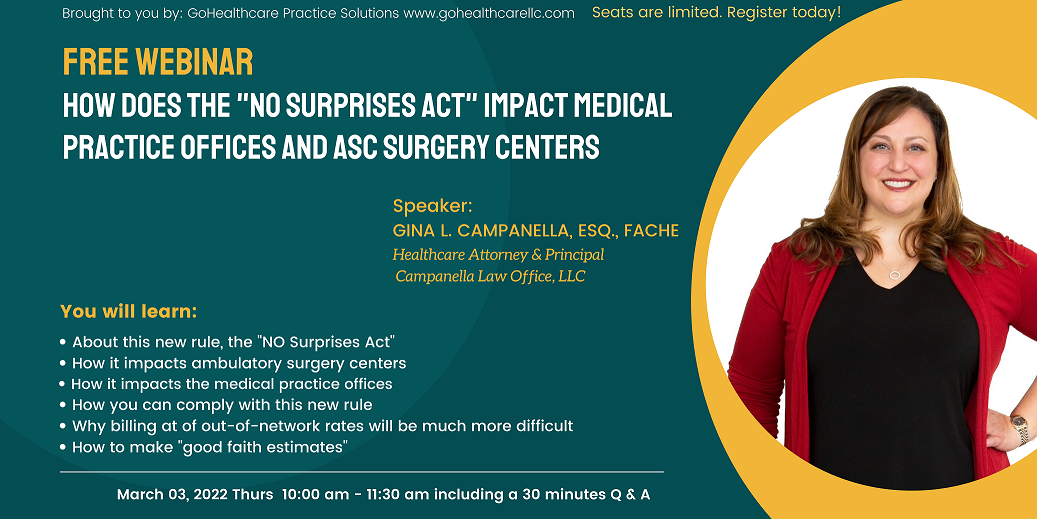


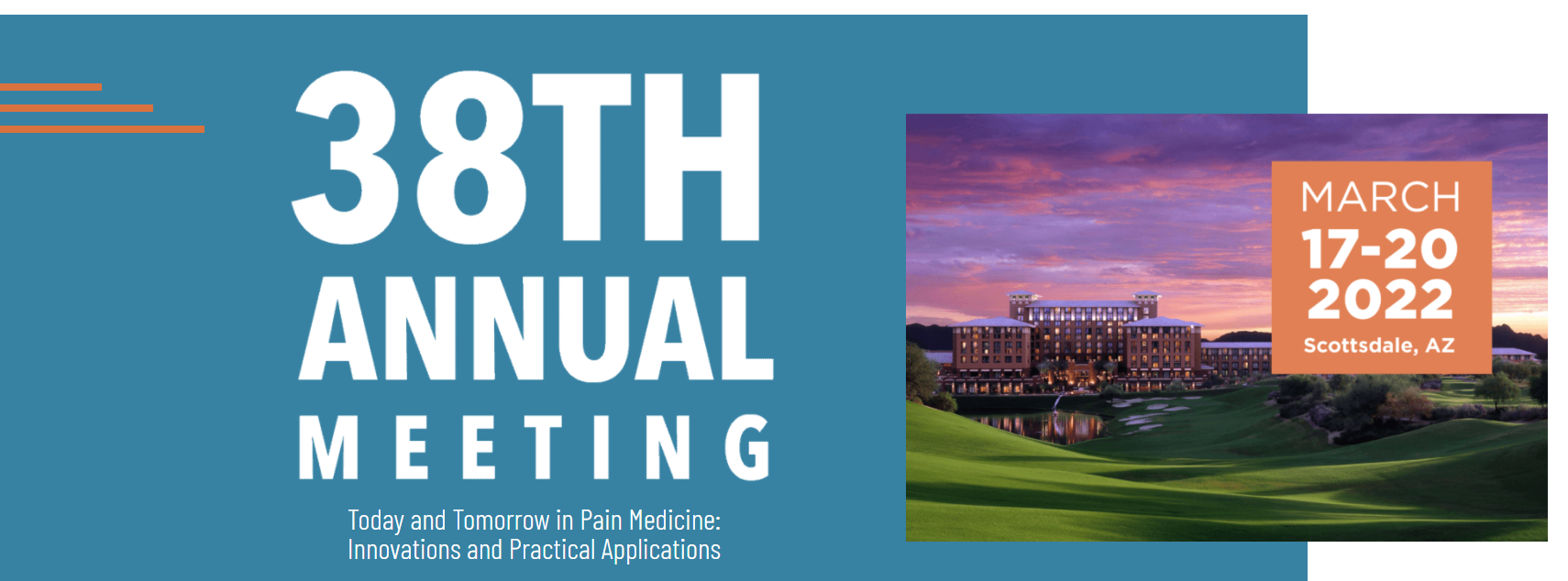

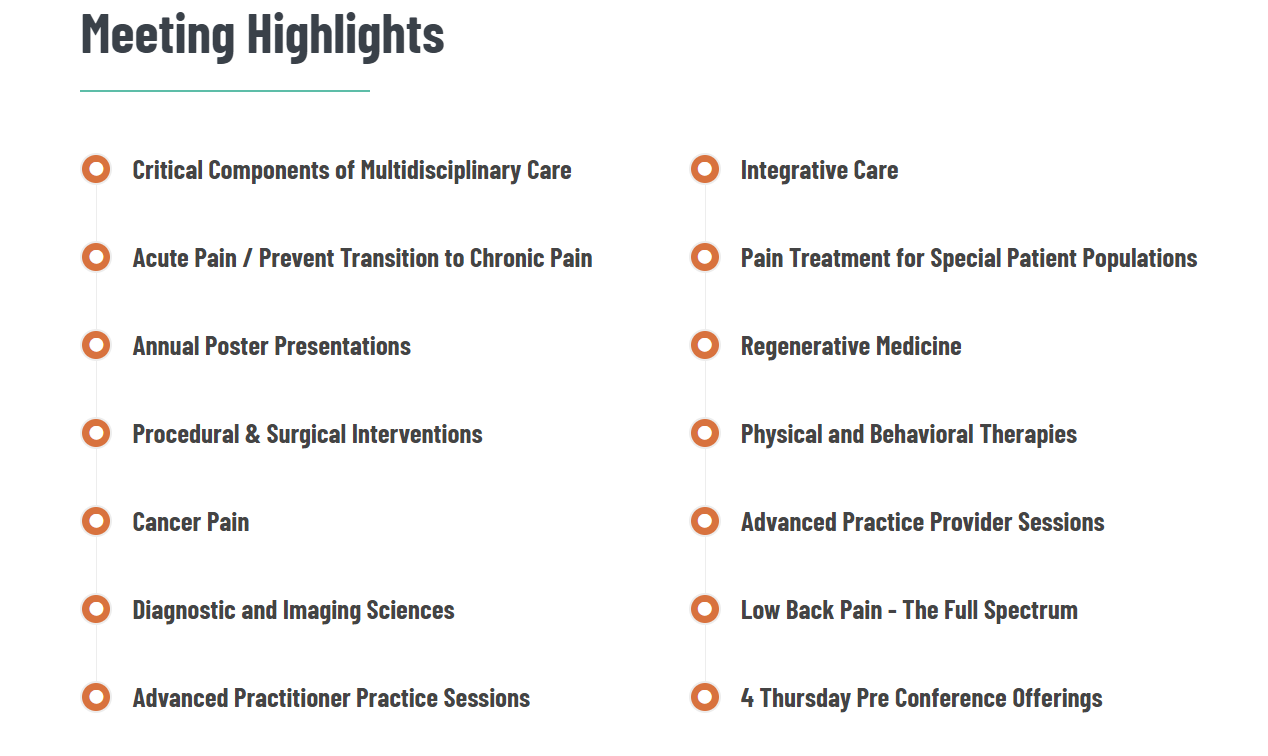
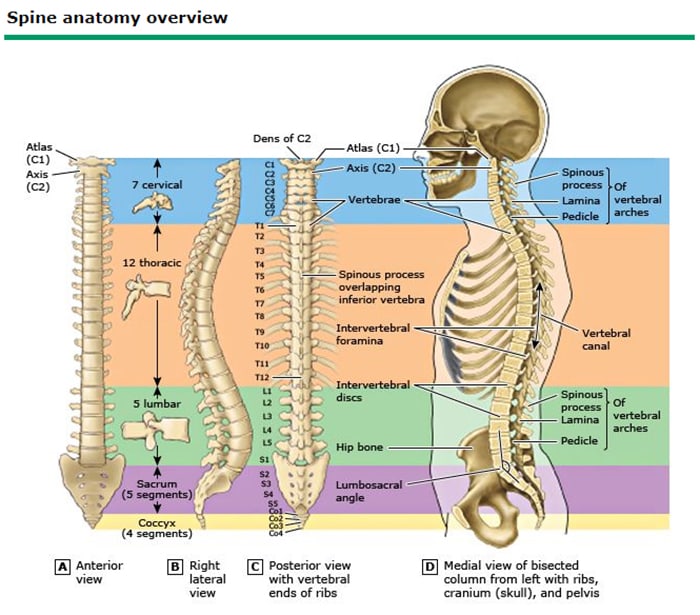
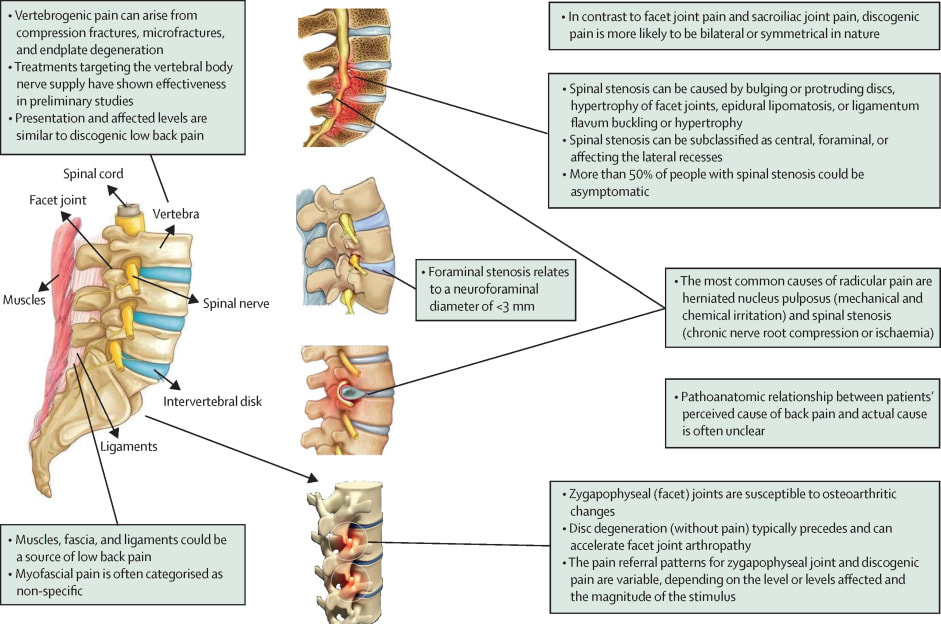

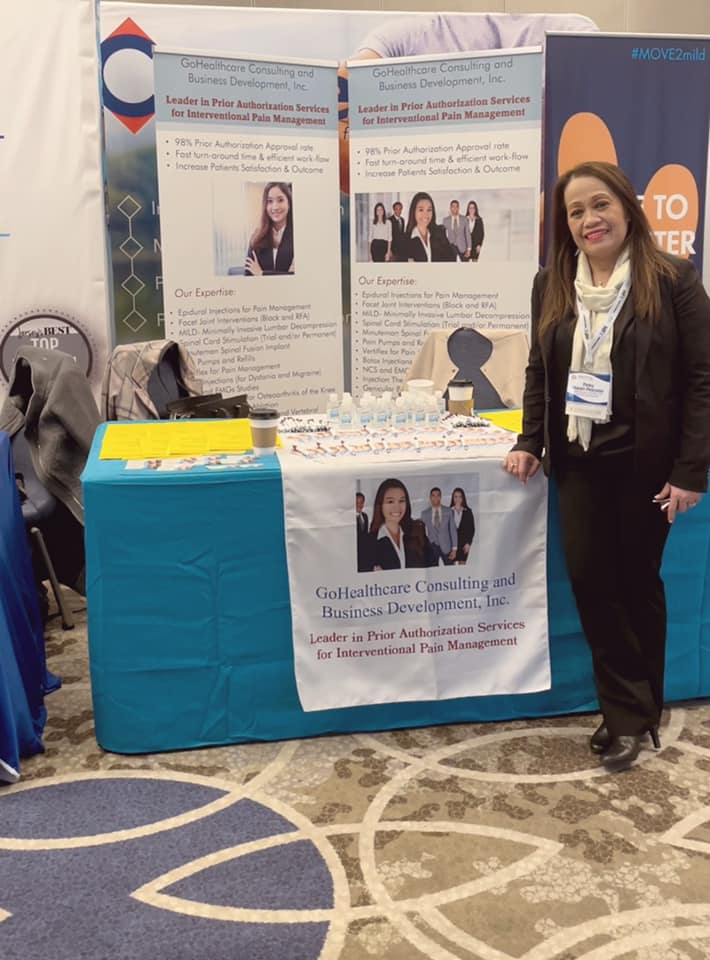
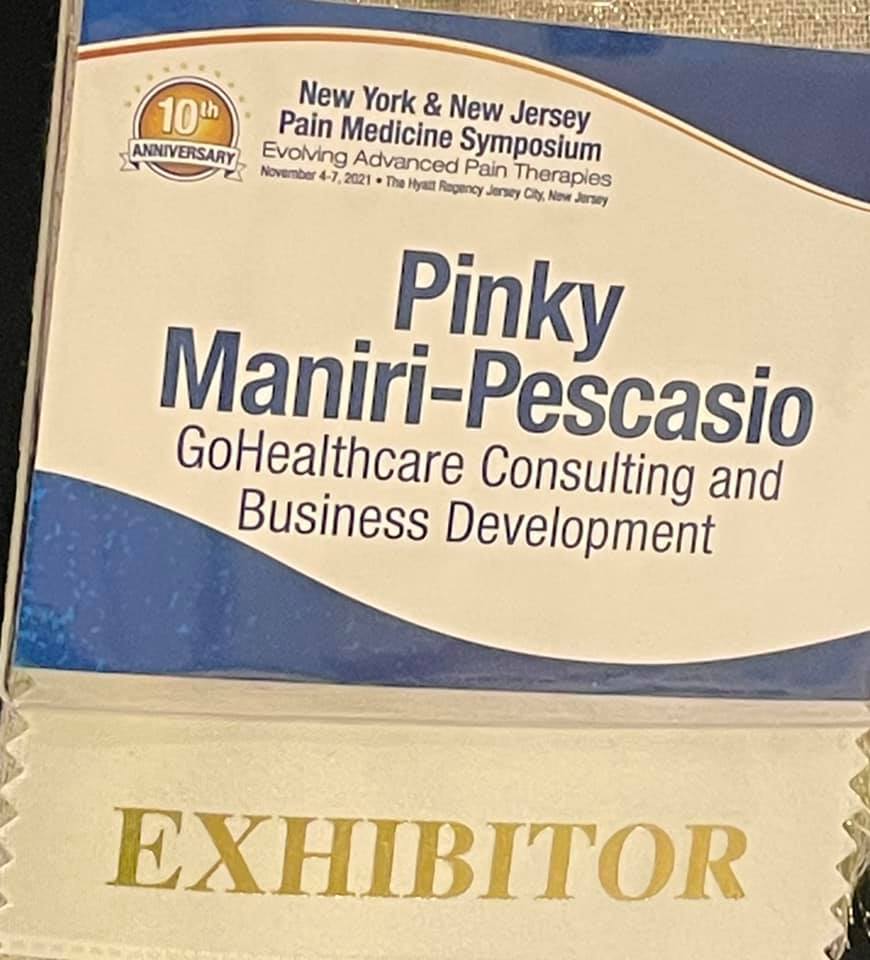

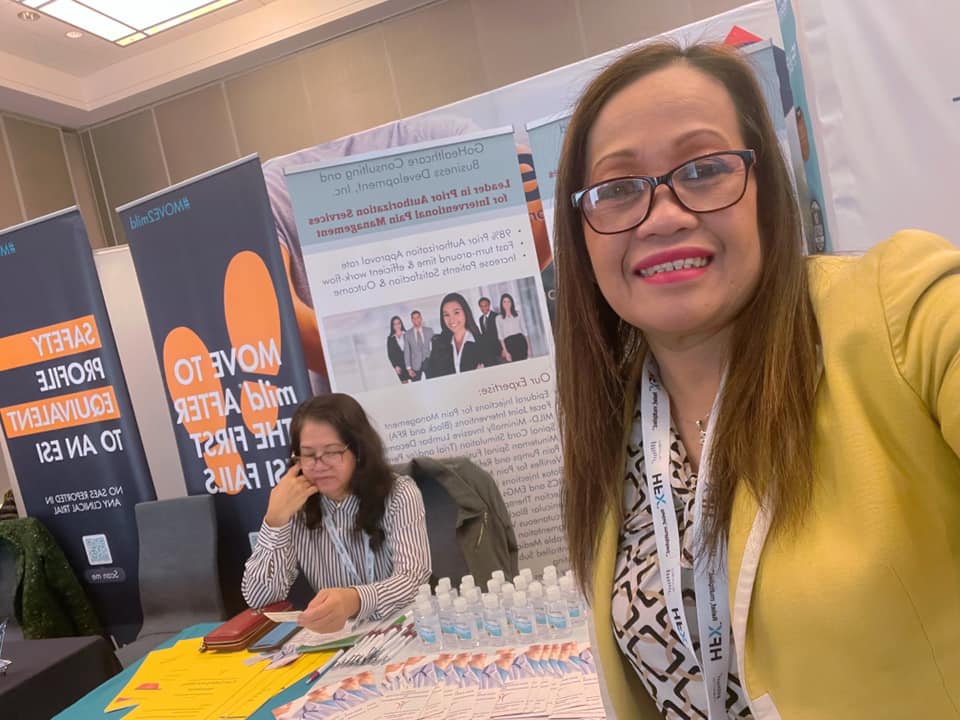
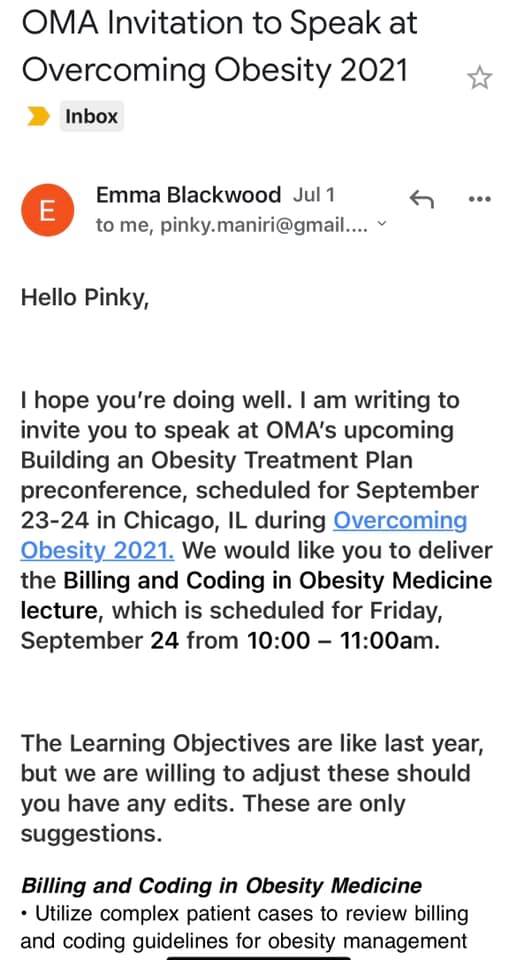
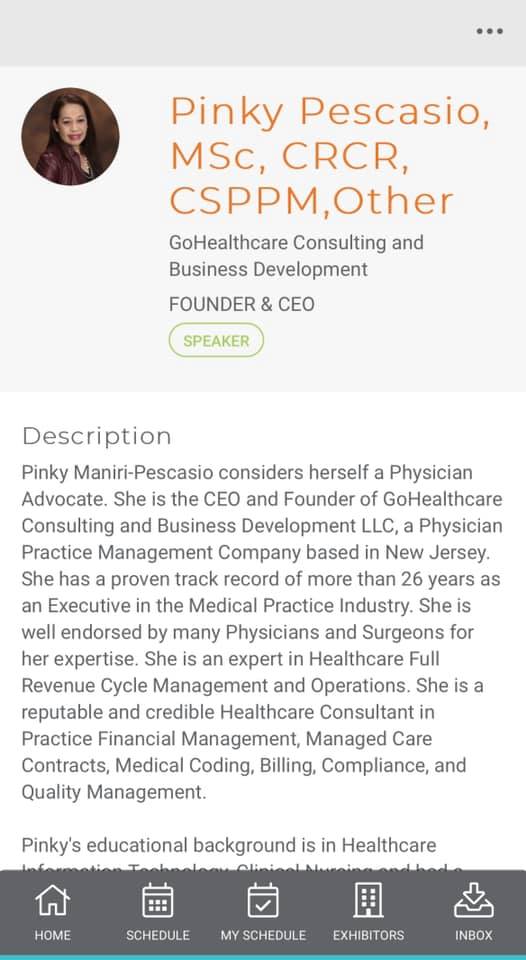

 RSS Feed
RSS Feed